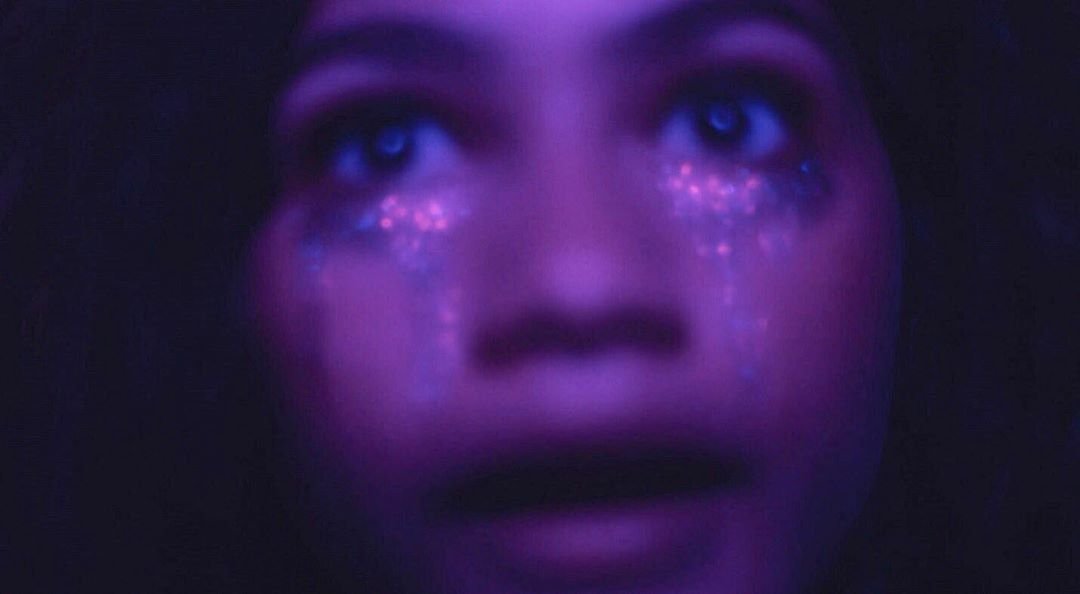Altered Perceptions
Euphoria’s imperfect depiction of reality
Written by Emma Goshin, Contributing Writer
TW: Drug use and addiction
When a 10-year-old me heard from my gossipy town’s Facebook group that a middle school student had been caught by police for smoking weed, I was shocked. Although in my kid-like brain I thought it was “wheat,” my mother explained to me that weed, not wheat, was an illegal drug used to get high. A teenager smoking pot? In my town? In a tight-knit community such as my own, rumors run the show. By the next day, all of my friends were talking about this infamous teen who had broken the law. Weed seemed like such a big and dangerous ordeal back then. Because there has been a successful movement to legalize marijuana in many states, I no longer perceive it as a life-threatening and dangerous drug. However, that initial shock I felt when I heard about the middle schooler in my town smoking weed was the same feeling instilled in me when I finished the first season of the daring show, “Euphoria.”
The show follows a group of high school students in their experience with drugs, sex, friendship, identity and trauma (2020). It aims to display the authentic and difficult experiences of high school students dealing with a plethora of mental health issues. The smash hit’s first season averaged 5.6 million views per episode (Andreeva, 2019).
Rue, the show’s main character, battles with several drug addictions. She is not the only one in the Euphoria universe, however, that uses substances like Xanax, molly and cocaine. The show’s producers display a wide variety of how drugs are used amongst high school students. Rue’s classmates and friends use hard drugs for various reasons from dealing with stress to having a fun time with friends.
One scene from the show that stuck with me was the aftermath of two characters, Maddy and Cassie, taking molly before going to a carnival. Molly, the powder form of MDMA, is a hallucinogenic drug that causes distortions in a person’s concept of time and enhanced sensory enjoyment (National Institute on Drug Abuse, 2021). Sometimes, substances sold and labeled as molly may not contain any real MDMA. Hard drugs like these are extremely dangerous, not only because of addictive properties and possible self-endangerment but also because they can be laced with other fatal chemicals. During this famous carnival scene, both Maddy and Cassie publicly embarrass themselves and wake up the next morning regretful of their actions.
This is just one example of the glamorized depiction of drugs in “Euphoria.” The entire show is riddled with dangerous substances the characters buy, sell and use. “Euphoria” was shocking to watch for the first time; it has an almost addicting nature that brings viewers back in. However, it also highlights a comparison that can be made between the portrayal of drug use on T.V. and in real life.
In a New York Times article covering two anonymous women, called N. and M., readers get a sense of how recovering addicts and those affected by addiction may feel about Euphoria’s portrayal of these issues (Buckley, 2019).
The women compared their experience with Rue by identifying how amazing she felt on drugs but how awful she looked from the outside. While the women saw parallels between their experiences with addiction, they also identified several differences.
Both N. and M. were years clean when this article was released and explained how every move they made in life was to get high. In one scene of Euphoria, a drug dealer forced Rue to lick fentanyl off of a knife. Once she was high, the dealer wanted to be paid for the drug with sex. However, the “good guy” drug dealer offered the other dealer cash to lay off. N. and M. pointed out that in real life, people do not look after you like that (Sanger Katz & Carroll, 2019).
We can readily expect that teenage dramas will upscale the intensity and appeal of their characters’ lives. Euphoria focuses on teens who are riddled with substance abuse issues, however, teenagers today are using fewer hard drugs than their previous generations did at their age (Sanger Katz & Carroll, 2019). Teenagers today also face some of the issues that Euphoria covers more often than their parents did. Suicides and the number of people vaping have risen over the last few years (Sanger Katz & Carroll, 2019). Overdose deaths are rising, posing a danger to influenceable teens who take away only the glamorous side of drug use from “Euphoria.”
Viewers should take the story with a grain of salt. Through the show, characters are juxtaposed to demonstrate how different people use and respond to hard drugs. Viewers watch both the good and the bad of addiction. It is important to ignore the single story of the high of drug use and focus on the overarching idea that the show’s producers aimed for: opening up a dialogue on issues that today’s teens may face (Stack, 2019).
Sources:
Andreeva, N. (2019, August 6). 'euphoria' season finale hits series high ratings fueled by strong digital viewing. Deadline.
Euphoria: Official website for the HBO series. HBO. (2020, August 17).
National Institute on Drug Abuse. (2021, April 13). What is MDMA? National Institute on Drug Abuse.
Sanger-katz, M., & Carroll, A. E. (2019, June 23). The 'euphoria' teenagers are wild. but most real teenagers are tame. The New York Times.
Stack, T. (2019, June 16). 'euphoria' creator on why it's okay that some people are 'freaked out' by his controversial New show. EW.com.

